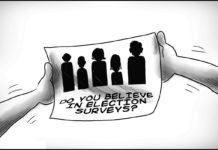
ACCORDING to the US Department of Agriculture, bioengineered food is defined as food that “contains detectable genetic material that has been modified through certain lab techniques that cannot be created through conventional breeding or found in nature”.
Bioengineered foods are also known as genetically modified organisms (GMOs). This is quoted directly from Microsoft Bing Chat. So why the subterfuge?
Since it is actually GMO, why go around the bush and call it another name?
The problem is, most people do not understand what “bioengineered” means, even those who are strongly opposed to GMOs.
Actually, some people are allergic to GMOs! The problem here is the poor enforcement of packaging and labeling laws.
I would imagine that before an imported product lands on the grocery shelves, they have to pass through the scrutiny of the Bureau of Customs (BOC), the Food and Drug Administration (FDA) and Bureau of Import Services (BIS) under the Department of Trade and Industry (DTI).
Aside from that, they have to be inspected by the grocery owners. But why is it that nobody notices this sleight of hand to pass off a GMO product?
By now, the battle against GMO might already be lost, but still, consumers have a right to know what they are buying and eating. However, consumers can still fight back by growing their own food, and that is already happening all over the world. If you want, I can connect you.
THE BROKEN WINDOWS THEORY
According to Wikipedia, “In criminology, the broken windows theory states that visible signs of crime, antisocial behavior, and civil disorder create an urban environment that encourages further crime and disorder, including serious crimes.
The theory suggests that policing methods that target minor crimes such as vandalism, loitering, public drinking, jaywalking, and fare evasion help to create an atmosphere of order and lawfulness”.
The layman interpretation of the theory states that if there is even one broken window in a neighborhood, and it is not fixed, it could trigger the creation of other broken windows that could eventually lead to the deterioration of the community.
The first lesson here is to stop early signs of vandalism before it spreads and worsens. The second lesson here is for police departments to become more vigilant in monitoring and detecting early signs that would indicate that the conditions for crime might already be growing or emerging in a neighborhood or community, instead of waiting for the actual crimes to happen, before they would take action.
The broken windows theory also applies to the preservation of real estate values. What that means is that the more deteriorated and vandalized a neighborhood is, the more likely that the real estate prices will go down. The safer the community is, the more housing starts there will be, and the more that the economy will grow./PN



